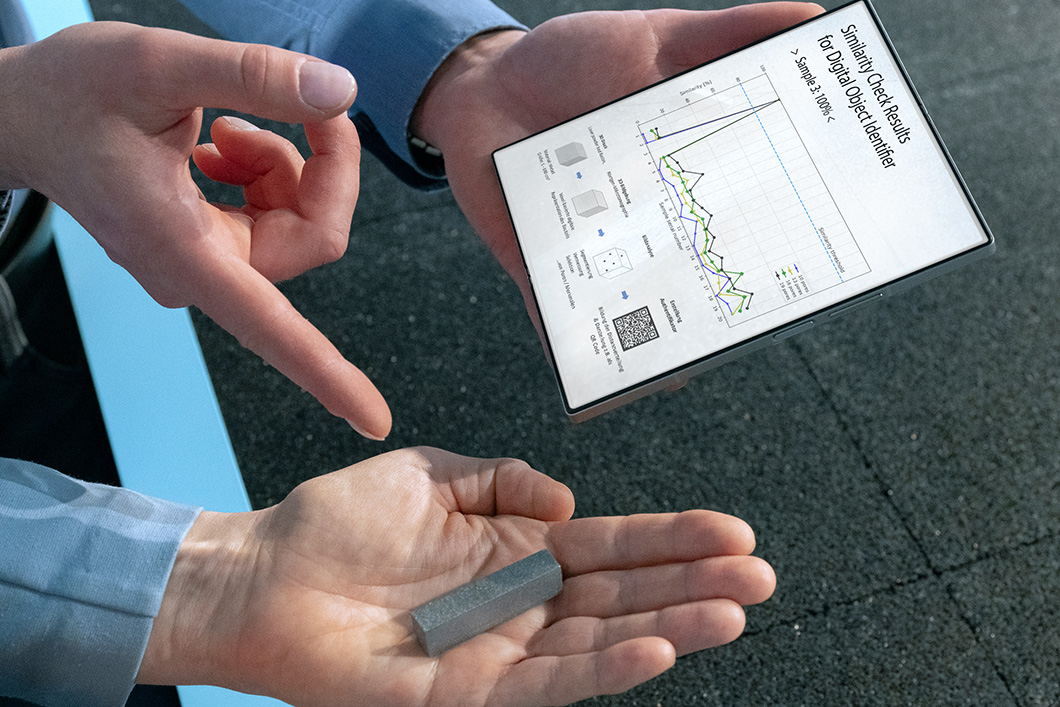
The digital object identifier establishes a secure and unique connection between digital product data and the corresponding physical component, ensuring tamper-proof traceability.
Source: BAM
In additive manufacturing, the secure identification and authentication of components is becoming increasingly important—whether for quality assurance, traceability, or protection against product piracy. A team at the Federal Institute for Materials Research and Testing (BAM) is now demonstrating how 3D-printed components can be identified by their machine-readable markings and authenticated by their unique microstructure. BAM has already filed a European patent for this innovative technology.
A component produced using 3D printing contains tiny, randomly distributed microstructures inside it – comparable to an individual fingerprint. These features cannot be reproduced and serve as a unique identifier. It is precisely these structures that the new technology uses for tamper-proof authentication.
These fine structures are made visible using high-resolution 3D micro-computed tomography. A geometric pattern is calculated from the image data, which is linked to a digital identity – a so-called Digital Object Identifier (DOI) – and stored in a database. During a subsequent check, the fingerprint can be compared with the stored one. This creates a forgery-proof link between the physical object and its virtual image with the manufacturing data.
"Our method does not require any visible markings or intervention in the printing process," explains project manager Anja Waske from BAM. "This makes it particularly secure against manipulation and opens up new possibilities for product verification, logistics, and plagiarism protection."
The DOI4AM (Digital Object Identifier for Additive Manufacturing) project is developing a continuous workflow that enables the authentication of components within the framework of a digital product passport. Different materials and geometries are being tested in practice and linked to existing software solutions.
The cooperation partner is Additive Marking, a company based in Paderborn. The specialists for digital product marking for 3D printing are expanding their Pass-X.eu platform with a new module for the traceability of additively manufactured components. It enables fast access to CT service providers and integrates authentication via microstructures and visualization in the digital product passport.
The technology developed is part of the research activities at BAM's AM Competence Center, which brings together interdisciplinary research and application-oriented solutions for additive manufacturing. At the same time, the project supports the goals of the Quality Infrastructure Digital (QI-Digital) initiative, which is advancing modern, data-based quality assurance for the industry of tomorrow – with a focus on transparency, traceability, and trust along the entire value chain.
DOI4AM is funded by the German Federal Ministry of Research, Technology and Space (BMFTR) as part of the DATIpilot funding guideline. The aim is to accelerate the transfer of research results into industrial practice and make innovative technologies available quickly.


